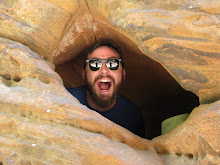The techniques in creating a neogeographic map are fraught with pitfalls. Though the wide spread access and potential for mass contribution to the field of geography is great, the road to making a complicated dynamic map is paved with inaccuracy, in-efficiency, and technological complications. The process of creating my interactive star map started by using data provided on a local celebrity address website (http://www.hollywoodusa.co.uk/celebrity-homes.htm#B). Though the accuracy of these addresses are unknown, and with no way to authenticate any star's address if found, I settled on the impressive comprehensive nature of the data set. By importing this list of data into an excel spreadsheet I was able to achieve a format that would be geocode compatible. By accessing a free geocode website (http://www.batchgeocode.com/) that accepted .xls files, I was able to convert raw text addresses into geocoded locations. A group of addresses were lost in this process due to the formatting of the addresses and the website's algorithm not recognizing the locations. Geocoding the wrong locations to some of the data also took place. This was evident by some locations displayed outside of the US. By using Google Earth to convert this geocoded file to a more widely accepted format (.KML) I was able to import the data directly into Google My Maps. Now that I had my geocoded locations on a map, I geoparsed the addresses and geotagged videos to tell something about the mapped celebrities.
These common processes, though full of inadequacies, yielded a comprehensive map for the public's enjoyment. And although locations were lost through the geocoding process, the remaining addresses should still be fairly accurate. Also, given higher quality and properly formatted base data, this process could become even more efficient. This map could still offer benefits to the public even if the overall accuracy is not up to government requirements. These are the types of advantages and disadvantages in creating complex neogeographic style maps.
(If using Firefox, click "View Interactive Star Map in a larger map". Clicking on the locations within the embedded map will freeze the browser due to the geocoded media. This is a Firefox flaw, Internet Explorer works fine.)


